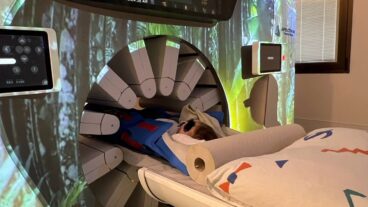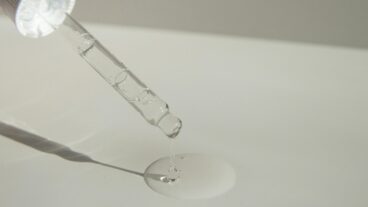Similar to the way a farmer milks a cow, NanoCyte culls nano-injectors from its sea anemones in a marine farm in northern Israel close to the Sea of Galilee.Imagine a farm in the ocean, where cowboys corral sea life instead of livestock.
While there is not yet talk of a jellyfish stampede, a team of Israeli scientists have taken a natural mechanism in sea animals used for 700 million years and have turned it into a medical advance that could make injections pain-free.
Researchers at NanoCyte startup have discovered a way to take the miniscule stingers found in sea creatures and fill them with important pharmaceuticals that can be delivered painlessly through the skin of a patient. A person simply rubs on a cream loaded with sea-life stingers and embedded with a drug such as insulin onto the skin, activating the stingers which inject the drug.
In the near future, this may mean no more daily injections for diabetics, no more injections at the dentist office and no more injections before surgery.
Anyone who has been stung by a jellyfish knows how fast the pain can travel. Based on this mechanism, NanoCyte investigated non-toxic versions of similar animals, the sea anemone, and discovered a way to put its sting to good use. Sea anenomes may look like flowers, but they are a boneless animal which prey on other sea life. They live in the sea usually attached to the sea bed or rock, but can move around slowly.
Similar to the way a farmer milks a cow, NanoCyte culls nano-injectors from its sea anemones in a marine farm in northern Israel close to the Sea of Galilee. There, the company’s scientists maintain large tanks, each filled with about 10,000 anemones and once extracted, the stingers go through a separation process and end up as a powder. The injectors of the anemones remaining are an organic substance which are filled with drugs by osmotic pressure.
The company claims that by 2008 when their clinical studies are complete, it will be able to deliver a wide range of small and large molecule drugs – organic molecules, peptides and proteins – across the blood barrier. For the first time, NanoCyte hopes to be able to supply an immediate topical relief to chemotherapy patients, those requiring antibiotics for serious infections, and those taking anti-rejection drugs after organ transplant operations.
Proteins and peptides, the company reports, are quickly becoming one of the world’s most desired drugs as recent advances in pharmaceutical technology have made headway in the medical world. But applications are limited because the molecules of the active components are unstable chemically and physically.
Until now, the most relied form of drug delivery for peptides and proteins is via an injection. It is a method which ensures a drug will be absorbed quickly and adequately, but which causes suffering and inconvenience to most people.
“Pharmaceutical products of the future will be based on peptides and proteins,” NanoCyte’s general manager Gilad Lorberbaum told ISRAEL21c.
If only one company can bypass oral delivery and injections, it will put them in a substantial position in the multi billion-dollar drug delivery market. Before joining NanoCyte, Lorberbaum was an executive at one of the world’s largest pharmaceutical companies, Teva Pharmaceuticals.
So far, NanoCyte’s most advanced application is a form of the local anesthetic Lidocaine, a cream that numbs the skin and decreases the sensation of pain. It has a market potential of $400 million a year.
Hand-in-tentacle with sea life, NanoCyte plans to give drug giant Astra Zeneca and its topical version of Lidocaine, Emla, a run for its money. Astra Zenica has captured a quarter of this market NanoCyte reports, but the delivery of the drug is slow taking about an hour for a full effect. NanoCyte claims to be able to supply full anesthesia within 3 minutes.
While the sea anemone frolics in its tank, NanoCyte’s advances will be good news to future surgery patients. In the US alone, 400 million surgeries a year require local anesthesia. The ability to deliver drugs through the skin has enormous consequences in the pediatric market where the use of needles can be complicated.
Once applied on the skin – on the arm and for local anesthesia the area in question – NanoCyte’s nano-injectors invisible to the naked eye, can deliver up to one million penetration points per each square inch of skin contact. This feature co-developed by sea life, Mother Nature and NanoCyte sends a drug surging into the blood quickly and effectively.
In the last months, NanoCyte’s business focus has shifted somewhat to the cosmeceutical markets, which will be a business priority for the company in parallel to the pharmaceutical market. Cosmeceuticals are compounds that cross the lines of both cosmetic and pharmaceutical industries and refer mainly to products that contain biologically active ingredients, such as those found in certain anti-wrinkle creams, baldness treatments and sunscreens.
Because NanoCyte’s products are based on mechanisms culled from nature, the company’s drug delivery methods are expected to be attractive to environmental conservationists who advocate that the preservation of species diversity is important to solve the diseases of mankind.
Having passed its initial human toxicity studies, NanoCyte is now negotiating with several Fortune 500 drug companies in the US to co develop painless, topical drug solutions. The company, unable to release names, has also started working with one of the largest marine facilities in the East Coast where sea anemones can be grown and cultivated in mass amounts.
Growing and using sea life to benefit mankind is an old story for NanoCyte founders, scientists Tamar Lotan and Amit Lotan, who previously founded Nidaria Technologies, an Israeli company that has developed the first and only jellyfish repellent.
Marketed under the name Safe Sea Lotion, dive centers and dermatology doctors in the US claim it is the world’s only protective gel against the poison and pain of jellyfish, sea nettles and sea lice. Some jellyfish stings can be deadly to children, and for adults, the fear of jellyfish stings, real or imagined, keeps many people from enjoying the ocean. Safe Sea lotion costs about $10 a bottle. Its benefits have been reported by major world media outlets such as the BBC.
NanoCyte is based on the idea that the jellyfish sting mechanism, found in other non-toxic species such as coral, hydra and sea anemone can be used in reverse, this time to apply therapeutics in a safe manner. On behalf of those who fear the sting of the needle, let’s hope they are right.












